Технология пищевой и перерабатывающей промышленности. Рубрика в журнале - Вестник Алматинского технологического университета
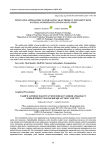
Статья научная
The quality and stability of meat products are crucial for consumer acceptance and safety. Lipid oxidation, color changes, and microbial spoilage are primary factors affecting meat quality, leading to a reduction in shelf life and nutritional value. Natural antioxidants have emerged as promising alternatives to synthetic antioxidants due to their safety and health benefits. However, their application is limited by their stability and efficacy under various processing and storage conditions. Encapsulation techniques have been developed to enhance the stability and controlled release of natural antioxidants in meat products. This review provides an overview of the latest advancements in the use of natural antioxidants and encapsulation technologies to improve meat product quality and stability. Recent studies, their outcomes, and future perspectives are discussed.
Бесплатно
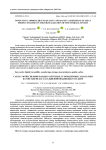
Статья научная
In the context of increasing demands for the quality and safety of food products, the integration of innovative storage technologies has become essential. This study aims to evaluate the impact of storage conditions and the Dixell XWEB300 monitoring system on the quality and safety of meat products enriched with plant-based components. The primary objective is to assess the effectiveness of digital systems in preventing oxidative processes, preserving organoleptic characteristics, and extending the shelf life of products. The scientific significance of this research lies in developing novel approaches to leveraging digital technologies for minimizing microbiological risks and enhancing the quality of meat products. The practical relevance is supported by findings that demonstrate improved microbiological indicators and preserved organoleptic properties under digital monitoring conditions compared to traditional methods. The methodology includes experiments to measure thiobarbituric and peroxide values, along with temperature and humidity monitoring under standard and digital storage conditions. The findings highlight the potential of digitalization to improve product quality and foster consumer trust. The results provide a foundation for further advancements in digital storage systems within the food industry.
Бесплатно

Investigation of the nutritional value of a whole camel meat product
Статья научная
Camel meat products are attracting increased interest worldwide due to their high functional properties and nutritional value. Camel meat products contain many essential nutrients as well as some components with potential bioactive properties that may be beneficial to human health and well-being. Camel meat products can be used as therapeutic and prophylactic food products if their dietary value and bioactive components are determined, which are potentially beneficial to the health of consumers. Meat consumers prefer to consume healthier meat products without changing their fundamental dietary patterns. This attitude could favor the development of the camel meat market. This article discusses and focuses on the study of nutritional value, the effect of plant additives on the softening of a camel meat product. The use of camel meat as a source of non-traditional resource. By adding vegetable raw materials, you can increase the nutritional value of the product. The frozen side of camel meat was used for the experiment. Brine from goji berries and rosemary was used as vegetable raw materials. Due to the influence of brine, the structure of the meat was softened and made softer. During the process of the study, analyses for indicators of the nutritional value of products were carried out at the "Scientific Research Institute of Food Safety" of the Almaty Technological University. The physical-chemical parameters of the product were determined: the mass fraction of protein, which was 18.7%, fat - 2.71% and carbohydrates - 48.75%. In addition, the indicators were determined as moisture retention capacity (MRC) - 85.43 ± 1.05%, fat retention capacity - 90.76 ± 0.90. The amino acid and fatty acid composition were also determined. The product contains high concentration of amino acids, with following amino acids being the most abundant: arginine - 2.211±0.885%, lysine - 2.088±0.710%, tyrosine - 1.597± 0.479%, phenylalanine - 1.597±0.479%, leucine+isoleucine - 2.334±0.607%, valine - 1.843±0.737%, proline - 3.317±0.862. These amino acids play a crucial role in growth, development, and maintaining overall health. The study results demonstrated that these plant-based products preserved the biological value of the final product.
Бесплатно
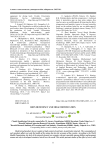
Iron deficiency and milk fortification
Статья научная
Modern food products do not contain a high content of nutrients, in particular minerals. The consumption of such products affects not only the health of the nation but also the economy of the country. According to the World Health Organization, the lack of the mineral element iron remains relevant, especially among children and pregnant women not only in developed countries, but all over the world. This article presents studies of the effect of cow's milk enrichment on the physico-chemical and organoleptic qualities of fortified milk. The cow's milk with a fat content of 3.6 and 2.8% was enriched with iron sulfate (FeSO4.7H2O) and trivalent ammonium citrate (C6H8FeNO7). The samples of Ferrous Sulfate (10mg) and Ferric Ammonium Citrate (10mg) showed significant changes in milk with fat content 2.8 % fortification. The effect of iron enrichment on the process of milk fermentation was also studied, and a milk sample was taken. The milk sample fortified with iron had a considerable acidity increase on 3 h from 22°T to 800T, this is by 37 % compared to the control sample. The effect of iron enrichment on the fermentation process or the supporting role of iron in the growth of fermenting bacteria is still in question, although a number of studies have been conducted in this area, but more clarity and specific research and experiments on this issue are still needed.
Бесплатно
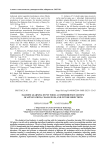
Статья научная
The global pet food industry is rapidly evolving with the integration of machine learning (ML) technologies. ML plays a crucial role in optimizing ingredient formulation, enhancing quality control, personalizing nutrition, and predicting consumer preferences. The use of deep learning, reinforcement learning, and natural language processing (NLP) is transforming pet food manufacturing by improving efficiency and ensuring better health outcomes for pets. This review explores the key applications of ML in pet food science, discusses current challenges, and highlights future directions. The paper also presents a comparative analysis of different ML techniques used in the pet food sector. Machine learning is transforming the pet food industry by optimizing ingredient formulation, improving quality control, and predicting consumer preferences. However, widespread AI adoption faces challenges, including data limitations, regulatory requirements, computational expenses, and consumer trust concerns. The future of AI-driven pet food innovation lies in explainable AI, blockchain-integrated supply chains, IoT-enabled pet health monitoring, and synthetic data-powered machine learning models. As technology advances, AI will play a key role in providing safer, healthier, and more personalized nutrition for pets, shaping the industry's future.
Бесплатно
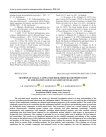
Статья научная
The presented article represents the results of a thorough investigation aimed at a deep understanding of the process of producing dried maral blood using the sublimation method. The main focus is on analyzing the technological aspects of this method and evaluating the chemical and biological properties of the resulting product. The results of the conducted research led to the conclusion that the sublimation method is an effective and promising means of preserving the biologically active components in dried maral blood. This assessment is based on a careful analysis of various product characteristics, including protein content, trace elements, and other important constituents. Scientific measurements and comparisons with standards, including physicochemical analysis, and other methods, allowed establishing that dried maral blood obtained by the sublimation method exhibits a high degree of preservation of biologically active substances. This confirms its potential for use in various fields such as medicine, the food industry, and cosmetology. Such results are of significant importance for the scientific community and industry as they confirm the prospects and effectiveness of this production method, which can contribute to the development of new technologies and products in the future. Ultimately, the conclusions drawn confirm the prospects for the widespread use of dried maral blood in various fields, including medicine, the food industry, and cosmetology. These findings are of great significance for the scientific community and industrial circles, as they emphasize not only the importance of this production method but also open up new horizons for further research and development in the field of biologically active products.
Бесплатно

Non-traditional plant raw ingredients in the production of meat and vegetable pates
Статья научная
This article explores the use of non-traditional plant-based raw materials in the production of meat-and-vegetable pâté. Duck meat and offal serve as the primary meat components, while the vegetable ingredients include flaxseed and lentil flour, onions, garlic, sesame oil, carrots, table salt, cloves, ground black pepper, paprika, broth, and water. The broth is utilized after cooking the duck meat. To create high-quality, multi-component meat products with excellent organoleptic characteristics and to address deficiencies in specific nutrients, it is crucial to consider the biological value and qualitative composition of the protein component. The quality assessment, based on organoleptic and physicochemical indicators, was conducted using standard methods. The study also presents findings on the food safety and microbiological indicators of the meat-and-vegetable pâté. The research confirms that the pâté with nontraditional additives meets all regulatory requirements for microbiological safety and food quality. The development of meat products, including pâtés, with plant-based additives not only enhances the technological properties of raw materials but also enriches the products with essential nutrients and helps prevent potential functional disorders in the human body. This approach represents a key focus area in the modern meat industry.
Бесплатно
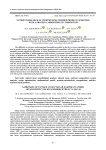
Nutrient research of chopped semi-finished products enriched with a protein-carbohydrate composition
Статья научная
The difficulty in solving a multicomponent formulation problem is that five or more ingredients are currently used in product design. Solving a system of linear equations and inequalities with such a large number of variables manually presents significant difficulties, in which formulation errors are not excluded. In the work the methodology of computer modelling of multicomponent meat products is presented, which is realized on an example of technology of minced meat production. The aim of the research is to design the mathematical model of minced meat with the addition of new protein-carbohydrate compositions (PCC). The objects of research are minced meat, PCC, which includes chickpea flour, whey protein concentrate, ground soy and water for hydration. Implementation of the design method was carried out with the software system Microsoft Excel with the "Solution Finder" add-on. Work with the Excel spreadsheet processor is based on entering the data required for calculation, calculation formulas into the corresponding cells of the spreadsheet. The article presents the results of the study of the nutrient composition of minced meat with the addition of the new PCC. By means of mathematical modelling, the formulation of minced meat with PCC was optimized. Nutritional and energy value, vitamin, mineral and amino acid content of the obtained minced meat were determined. A targeted combination of ingredients made it possible to obtain food products with a given composition and properties.
Бесплатно
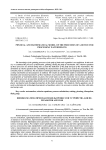
Physical and mathematical model of the processes of a device for processing watermelons
Статья научная
The knowledge of the grinding processes of the pulp of fruits and vegetables is not sufficient. In this article, we examined the processes of destruction, grinding, mixing the pulp of watermelon. The criterion equations of these processes are derived taking into account the indicators of the pulp and peel of the watermelon. The derivation of criteria equations for calculating the characteristics of the processes used in the processing of watermelon fruits is considered. The mechanic-technological basis for calculating and designing machines for processing watermelons for food purposes is outlined. The results of experimental studies to determine the optimal kinematic and structural parameters of these machines are presented. The basic physic mechanical and rheological properties of watermelon fruits are given. One of the tasks set for the researcher was to choose a physical model of the processes of separation of pulp from the crust, destruction, grinding of pulp and mixing of the pulp. The values of these quantities depend both on the kinematic parameters of the dynamic interaction and on the physic mechanical and rheological properties of the fruits of melons. The obtained criteria equations can be used to determine the technological parameters of machines where it is necessary to destroy the fetus with minimal energy costs.
Бесплатно
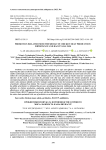
Probiotics isolated from the shubat in chicken meat production: importance and HACCP analysis
Статья научная
Probiotics are becoming more widely acknowledged as a safe and effective alternative to antibiotics for improving the safety of chicken meat. The investigation of potential hazards throughout the chicken meat supply chain enables a thorough assessment of contamination risks, allowing for the establishment of control and corrective actions within the corresponding processes. The ultimate goal is to ensure the safety of chicken meat for consumers. The objective of this study is to ascertain the potential risks that may arise inside the chicken production process, encompassing physical, chemical, and biological factors, with the identification of critical control points (CCPs). The study is also aiming to identify corrective strategies and approaches for decreasing the hazards associated with using of probiotics obtained from shubat. The research conducted involved conducting microbiological evaluations to test the ability of probiotics to withstand the presence of pathogenic bacteria. Additionally, the study examined the use of probiotics in chicken production, employing careful monitoring and comprehensive analyses to figure out the effectiveness of the supplements. For hazard identification and risk assessment, the Hazard Analysis and Critical Control Points (HACCP) approach was used, with the key findings showing that the most critical activities throughout the entire chain pertained to the use of probiotics as an alternative to antibiotics.
Бесплатно
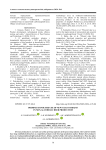
Prospects for the use of new yeast strains in non-alcoholic beer production
Статья научная
Brewery production is currently one of the growing segments of the processing industry. Beer and beer drinks have long established themselves as competitive products in the beverage production market. Modern beer producers focus on creating traditional light and dark beers, birmix, and beer drinks with various fruit flavours. They also place particular importance on producing non-alcoholic beer. The increase in demand for non-alcoholic beer is due to the partial transition to proper nutrition, the expansion of the assortment and the appearance of new flavours on the shelves. Non-alcoholic beer is a foamy beverage prepared according to classical beer production technology but with technological solutions for removing ethyl alcohol at the output. For the production of non-alcoholic beer, the permissible concentration of ethyl alcohol, which does not exceed 0.5%, is used. Vacuum distillation and membrane methods are used, and alcohol is removed by influencing the course of the technological process. One of these methods is the use of unique yeast strains in fermentation. The purpose of the presented research is to select new yeast strains for producing non-alcoholic beer. Four yeast strains were studied to determine their degree of digestion and influence on the profile of the finished beer. It was determined that yeast strain W 34/70 has the lowest degree of digestion. By technological and physicochemical parameters, the beer wort fermented by this yeast strain has suitable sensory parameters, which are not inferior to the production sample. The use of yeast strain W 34/70 also reduces the fermentation process and increases the shelf life of the finished beverage.
Бесплатно
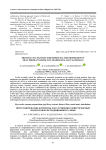
Proteolytic enzymes for improving the properties of meat products from non-traditional raw materials
Статья научная
In this scientific article the influence of enzymatic treatment on the quality of meat products from nontraditional raw materials (camelina, horse meat, mutton, beef) was studied. Bromelain (0.5-0.2%), papain (0.1-0.3%) and ficin (0.1-0.5%) as well as their combination were used as enzymes. To improve functional and technological characteristics, a multicomponent brine containing plant components (sea buckthorn powder, pumpkin powder and goji berry extract, rosemary extract), plant enzymes, phosphates and protein hydrolysates were used. The results showed that the use of enzymes contributed to the softening of the meat structure, improving the juiciness and tenderness of the product. The most pronounced effect was observed in samples treated with papain, while ficin had the greatest effect on mutton and beef. The study of pH dynamics showed that without enzyme treatment, pH increased to 6.67 after 5 days, indicating initial signs of spoilage. At the same time, the combined application of enzymes kept the pH at a stable level (6.20), which helped to extend the shelf life of the product. Thus, the use of proteolytic enzymes in combination with multicomponent brine improves the texture, organoleptic characteristics and functional and technological properties of meat products, which can be recommended for industrial production.
Бесплатно
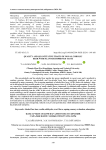
Quality and quantitative traits of non-alcoholic beer with flavor-improved taste
Статья научная
The non-alcoholic and low-alcohol beer market has grown significantly in recent years and is predicted to continue growing. However, non-alcoholic and low-alcohol beers have organoleptic problems and are not recognized by many consumers. The increasing popularity of alcohol-free beers (AFBs) fosters the industry's interest in delivering the best possible product. Yet, a remaining sensory issue of AFBs is the over-perception of wort flavor, caused by elevated concentrations of small volatile flavor compounds (i.e.aldehydes)still remains. Previously, molecular sieves (hydrophobic ZSM-5 type zeolites) were found as most suitable to remove these flavors by adsorption with high selectivity from the AFBs. In this work, a flavor-improved beer is produced at a pilot-scale using this novel technology, and its chemical composition, sensory profile, and stability are evaluated against a reference. Aldehyde concentrations in the flavor-improved product were found 79-93% lower than in the reference. The distinct difference was confirmed with a trained sensory panel and could be conserved even after three months of ageing at 30ºC. Future work will focus on the process design to scale up this technology. It is established that the release of a new kind of beer is economically profitable, since the expansion of the range contributes to a more complete use of production capacity, and consequently, reduced costs per unit of production, which ultimately leads to an increase in the profit of the enterprise.
Бесплатно
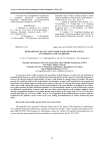
Research of qualitative indicators of mare’s milk in farms of Almaty region
Статья научная
As you know, mare's milk is used for the prevention of lung diseases, as well as for the treatment of gastrointestinal diseases to restore the disturbed intestinal microflora. In this regard, it is especially important to preserve the physico-chemical characteristics of mare's milk during its storage before processing. The paper presents the results of studies of the technological characteristics of mare's milk produced in four peasant and farm farms of the Almaty region according to the seasons of the year. It is known that, having a high biological value, mare's milk, among other types of milk of farm animals, is the most suitable raw material in the production of dairy products for baby and dietary nutrition. Low fat and protein content, as well as high lactose content are distinctive characteristics of mare's milk. However, their content depends on the feeding conditions, breed and age, geographical location. It was found that the mass fraction of fat ranges from 1.2 % to 2.8 %, the mass fraction of protein was 2.0-2.36 %, SOMO - 8.35-8.73 %. Fluctuations in the quality indicators of mare's milk are explained by the influence of the season of the year, feeding and maintenance in various peasant and farm farms.
Бесплатно
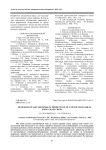
Research of safe methods of production of canned vegetables using grain crops
Статья научная
This article presents microbiological study of canned vegetable snacks replaced with various cereals.Currently both abroad and in our country, regulatory documents and recommendations on ensuring quality and safety of foodsare actively developed. The quality reduction and food spoilage may be related to biochemical (fermentative) processes inherent to products themselves. As another important factor, influencing on this can be microbiological contaminants.Miroorganisms constantly contaminates on surface of technological equipments, vegetables raw material and as a result they end up in canned food. Canned vegetable snacks are ready meals, made from vegetables processedin various ways, that can be usedcold and heated. The main purpose is studying microbiological indicators of canned vegetable snacks. According to the results of the study, some types of microorganisms were found in the samples.
Бесплатно

Research of safe methods of production of canned vegetables using grain crops
Статья научная
This article presents microbiological study of canned vegetable snacks replaced with various cereals.Currently both abroad and in our country, regulatory documents and recommendations on ensuring quality and safety of foodsare actively developed. The quality reduction and food spoilage may be related to biochemical (fermentative) processes inherent to products themselves. As another important factor, influencing on this can be microbiological contaminants.Miroorganisms constantly contaminates on surface of technological equipments, vegetables raw material and as a result they end up in canned food. Canned vegetable snacks are ready meals, made from vegetables processedin various ways, that can be usedcold and heated. The main purpose is studying microbiological indicators of canned vegetable snacks. According to the results of the study, some types of microorganisms were found in the samples.
Бесплатно
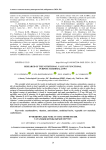
Research of the nutritional value of functional purpose marshmallows
Статья научная
This scientific article presents the results of studying the nutritional value (vitamins, antioxidants, organic acids) of marshmallows based on local vegetable raw materials (cranberries, currants, strawberries, apples) with the addition of powders from medicinal herbs (sea buckthorn leaves, St. John's wort, rosehip) in order to widen the assortment of immunostimulating confectionery for functional purposes. Based on the results of scientific research, the highest content of antioxidants is found in currant-apple and apple marshmallows (1.19 mg /100 and 1.15 mg/100g), most of the B vitamins: B1 in apple marshmallows with the addition of sea buckthorn leaves (0.191 mg /100g); vitamins B2 (0.511 mg /100g) and B6 (0.099 mg / 100g) in currant-apple marshmallows with the addition of St. John's wort; B5 in cranberry-apple marshmallows with the addition of sea buckthorn leaves (0.022 mg / 100g). Vitamin C content prevailed in strawberry and apple marshmallows, 0.109 mg/100g and 0.284 mg/100, respectively. All types of marshmallows with the addition of powders from medicinal herbs also distinguished themselves by a high content of organic food acids. Thus, it should be noted that the developed assortment of marshmallows has optimal indicators of nutritional value and meets the requirements for functional confectionery products.
Бесплатно
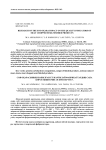
Research of the soy okara impact on the quality indicators of meat chopped semi-finished products
Статья научная
The article presents studies of the influence of the recipe composition, in particular, the mass fraction of herbal additives on the organoleptic, functional and technological properties of food systems of a combined composition using raw materials of animal (beef, lamb, poultry) and vegetable (soy okara, carrots) origin. The results of the study of soybean-minced okara for food safety indicators are also presented. The functional and technological indicators of meat chopped semi-finished products were also determined: moisture-binding capacity = 89.1%, water-holding capacity = 77.4%, fat-holding capacity = 83.2%. The output of meat chopped semi-finished products with PCC is 91%. The obtained values for the quality characteristics indicate the prospects of using this type of soybean-minced okara: directly for food, as well as for the production of minced meat semi-finished products, such as cutlets, minced meat, steaks; to design and optimize recipes for semi-finished products.
Бесплатно
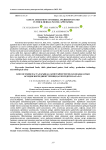
Safety assessment of herbal ingredients used in thick herbal pastes (appetizers)
Статья научная
Functional food products based on fruit, berry, vegetable, and nut raw materials are gaining increasing popularity due to their positive impact on health. This article explores the prospects of using thick plant-based pastes (appetizers) as sources of biologically active compounds, antioxidants, and dietary fiber. The study analyzes modern production technologies, including minimal heat treatment, the use of probiotics, and innovative grinding methods. Various local and unconventional plant raw materials were used in the research, such as Torpedo melon, sugar beet, carrot, table beet, rapeseed, safflower, flaxseed, and peanuts. The study examines chemical analysis methods that assess safety (toxic elements, microbiological indicators, radionuclides, and mycotoxins) and the nutritional value of these raw materials, as well as the acid number, which indicates freshness. Special attention is given to food safety issues, including heavy metal content, microbiological indicators, and radionuclide activity. The results confirm the potential for developing enriched appetizers based on domestic raw materials, which will enhance the competitiveness of local enterprises and expand the range of functional food products on the market.
Бесплатно
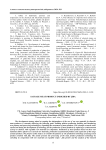
Sausage meat product enriched by jida
Статья научная
The development strategy aimed at creating the independence of the use of our raw materials by domestic meat producers is currently achieving the following goals: building modern production facilities and introducing new primary and processing technologies; expanding the assortment of meat products. The scientific research works carried out during the development of technology for the production of meat products by replacing a certain amount of beef or chicken with vegetable raw materials are important. Production of meat products based on these raw materials allows effective use of local raw materials, production of functional products and expansion of the range of meat products. The purpose of the study is to consider the features of the production technology of sausage meat product enriched with jida. The article presents the processing of the meat product production technology by enriching its composition with raw materials of vegetable origin - jida powder and the analysis of the mineral content of the finished product. The research work was carried out at the "Food Engineering" department of the M. Auezov South Kazakhstan University and at the "Construction and Biochemical Materials" regional test laboratory of engineering profile. Raster electron microscope (REM) and inductively coupled plasma mass spectrometry (ICP-MS) methods were used to determine the amount of mineral substances in meat products - sausage. The specialty of this work is the technology of product production using vegetable raw materials to enrich the content of meat products - sausages with minerals. Vegetable raw material - jida powder, by using it in the production of functional meat products, enriches the mineral content of meat products, and also by replacing a small part of meat raw materials, contributes to increasing the yield of the product. Jida powder is a vegetable raw material that is soluble in cold water and rich in dietary fiber, vitamin C, flavonoids and organic acids and does not cause losses in the production of food product. Jida powder production technology consists of: cleaning berries from dust and impuri[1]ties (passing them through a sorting fan); crushing (optimal duration of berry crushing in the IV-1 crusher τ= 52-65 sec, rotation speed of the working body 12000 rpm); drying (dry in the sun for fruits with a high sugar content).
Бесплатно

